We’re up to reviewing the San Jose Sharks brass in our series covering the team’s 2017-18 season. The prior articles are here:
- Main Points
- Forwards
- Joe Thornton
- Defensemen
- Goalies
- Roster and Salary Cap
- Coach
- GM and Owner
- Summary (up next)
Doug Wilson’s 2017 Offseason
It’s been quite a year for Doug Wilson, the San Jose Sharks general manager. The NHL’s calendar year begins on July 1, and on that day in 2017, Wilson re-signed two of the team’s cornerstones, Marc-Edouard Vlasic and Martin Jones. Within a day, the two greatest players in team history also signed new deals. Joe Thornton signed famously while on his riding lawnmower. But Patrick Marleau signed with the Toronto Maple Leafs, seemingly leaving a big hole in the lineup.
Wilson also re-upped Melker Karlsson (three years) and Joonas Donskoi (two years) with modestly priced deals. He pushed a low-ball one-year contract on Chris Tierney, challenging him to show he merited a better deal in his next contract.
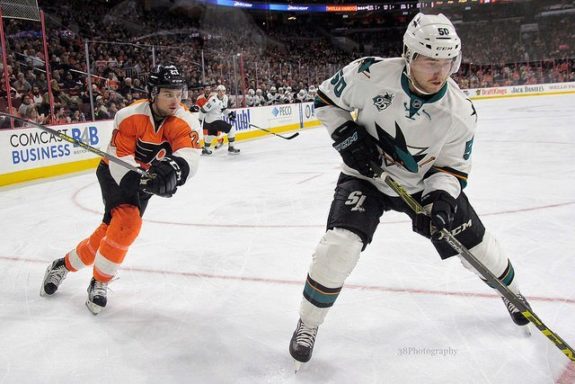
The hole created by Marleau’s absence presented Wilson with a major decision. Find talent to fill the void from the outside or trust the players within the organization to develop. As the offseason progressed, Wilson’s decision became clear, he’d fill the void from within.
He believed in his younger players and felt the group was ready to compete at the NHL level. For some players, the competition was for roster spots. For others, it was competition for increased playing time and greater responsibility in the lineup. In effect, Wilson made a deal with them. Committing to internal competition meant he wouldn’t sign outside players prior to the season.
Wilson’s Regular Season
Once the regular season began, the Sharks youth competed for spots under the eye of head coach Peter DeBoer. In our last piece, we gave DeBoer and his staff high marks for developing the younger players. Wilson had to be especially pleased with the improvements from Tierney and Timo Meier, Wilson’s highest draft pick (ninth overall) in the last decade. These were just two of a half-dozen young players who accepted management’s challenge and became quality NHL players.

Wilson took plenty of criticism for standing pat in the wake of Marleau’s departure, even as he preserved a healthy amount of cap space. Turns out, he was right in his approach.
He made few moves during the season. He did part ways with Ryan Carpenter by placing him on waivers, apparently because there was no deal to be had. Carpenter has been good for the Vegas Golden Knights, putting up numbers which dwarf his production in San Jose.
Wilson also made a pair of moves at the trade deadline that both deserve high marks. He acquired Eric Fehr for a seventh-round draft pick, not to universal acclaim. Fehr turned out to be an outstanding acquisition. He was integral to a fourth line that became one of the Sharks’ best assets. In just 24 games (ten in the playoffs) in San Jose, Fehr was plus-10.
Wilson sent Danny O’Regan, a fourth-round pick and a first-round pick to the Buffalo Sabres for Evander Kane. Kane was terrific in his first couple of weeks but injuries late in the season robbed him of the explosiveness he showed in his early games with San Jose.
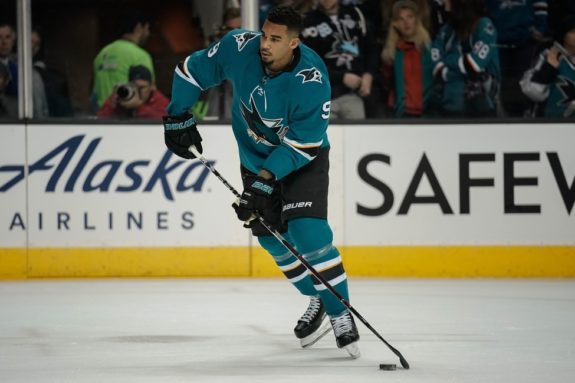
The trade deadline deals changed the team’s fortune, but the injury to Kane probably took away the Sharks’ best chance for a deep playoff run. A healthy Kane is a mismatch for the Golden Knights, and they were already using their best to slow down Tomas Hertl and Logan Couture. Alas, Vegas was able to handle a compromised Kane and won a closely fought series.
Doug Wilson’s 2018 Offseason
We covered much of Wilson’s upcoming offseason in our Roster and Salary Cap review, including the Sharks’ free agents. Three names will dominate this offseason: Kane, Thornton and John Tavares. On Thursday, Kane was re-signed for seven seasons at $7 million per season, the third largest deal in team history (link to my take on the deal).
Meanwhile, the Tavares story is now on full on boil. Wilson’s earlier statements might seem cryptic, but it doesn’t take much to decipher what he wants. He said he was looking for “a piece” (singular) that might need $10 million in cap space. Only one player fits the description: John Tavares.
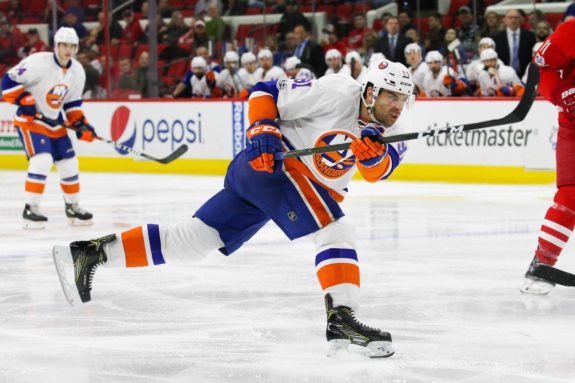
I’ve openly speculated about the Sharks’ opportunity to acquire Tavares beginning in February 2017. He is a perfect fit for San Jose and there’s a good chance the Sharks are a perfect fit for Tavares.
Still, with Kane’s new deal, the team’s ability to land Tavares have diminished with increased cap constraints. There are potential roster gyrations where players are moved out of the organization (discussed in the Roster and Salary Cap piece in our series). This process would leave the Sharks a good amount of cap space but it’s not clear if that space would be enough to compete effectively for Tavares, given the number of suitors expected.
Of course, the Isles aren’t giving up on keeping Tavares and he may never get to the open market. They’ve moved into full-court press mode. One senses their recent move to hire Lou Lamoriello has everything to do with retaining Tavares. At age 75, Lamoriello isn’t signing up for a long rebuild but to win soon, if not now. The Isles hope to move into a new venue in a few years and it’ll be a lot easier to sell tickets if they ice a highly competitive team. Whatever goes down with Tavares, it’ll happen between now and the first few days in July.
As for Thornton, everyone who matters wants him to return to San Jose, including Thornton. The price, though, is wide open and likely dependent on the Tavares domino.
Wilson has two other major deals that could happen beginning July 1. It’s a full year before the deals for Logan Couture and Joe Pavelski expire, so there is plenty of time. Couture was the team’s most valuable player last season and is due for a healthy raise, though he’ll be 30 by the time the next deal goes into effect. Pavelski is more complicated. The team captain is still valuable, but he’ll be 35 before he steps out into the ice with his next deal. He’s put on a lot of tough miles in his career. The price tag and length of his next deal will be very interesting, but it might not be easy to sign him.
Sharks Business
We’d dive into the impact of Sharks owner Hasso Plattner on the team, but Plattner spent another season essentially invisible to the team’s fanbase, leaving it to his executives to handle changes to the business side and Wilson to handle the hockey side.
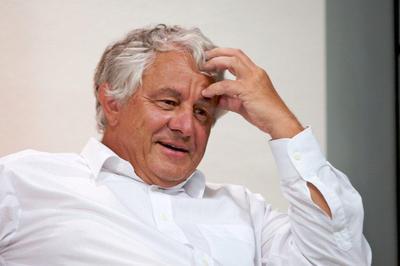
Among the business changes, the Sharks re-purposed the large dining area in the venue to solely benefit the season ticket holders with seats on the glass. The organization has made a point of providing more features to their top paying customers and this was another such move. The team also moved to 100% digital ticketing. While this was met with mixed reviews, it’s the direction the world is headed.
The Sharks also developed an alumni organization dedicated to charitable events in the area. The group is headed by former Sharks defenseman (and part-time masseuse) Douglas Murray. The first event was a wonderful choice, a charity hockey game held in Santa Rosa (Snoopy’s Home Ice) where massive wildfires devastated the community a few months before.
Expectations and Results
The Sharks general manager had a stellar year. Marleau’s departure caused no real damage to the team. Instead, it gave younger players more opportunity to advance and several did. Wilson has been criticized for his drafting over the years, but the number of young Sharks who played an important role was impressive. The team got younger, deeper and remained good. At the trade deadline, Wilson made a pair of moves which gave them a realistic chance for a deep playoff run.
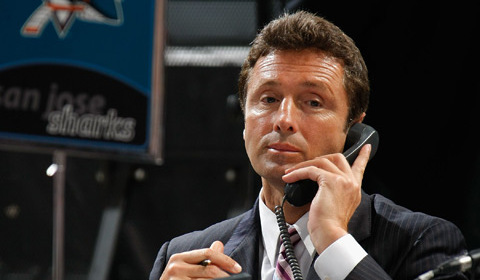
All this, and he positioned the team about as well as anyone could for another major addition. This offseason might be the most important in Wilson’s tenure with San Jose (keeping in mind the Thornton trade happened midseason). We’ll know within six weeks if he can pull off what seems to have been in the works for a very long time.